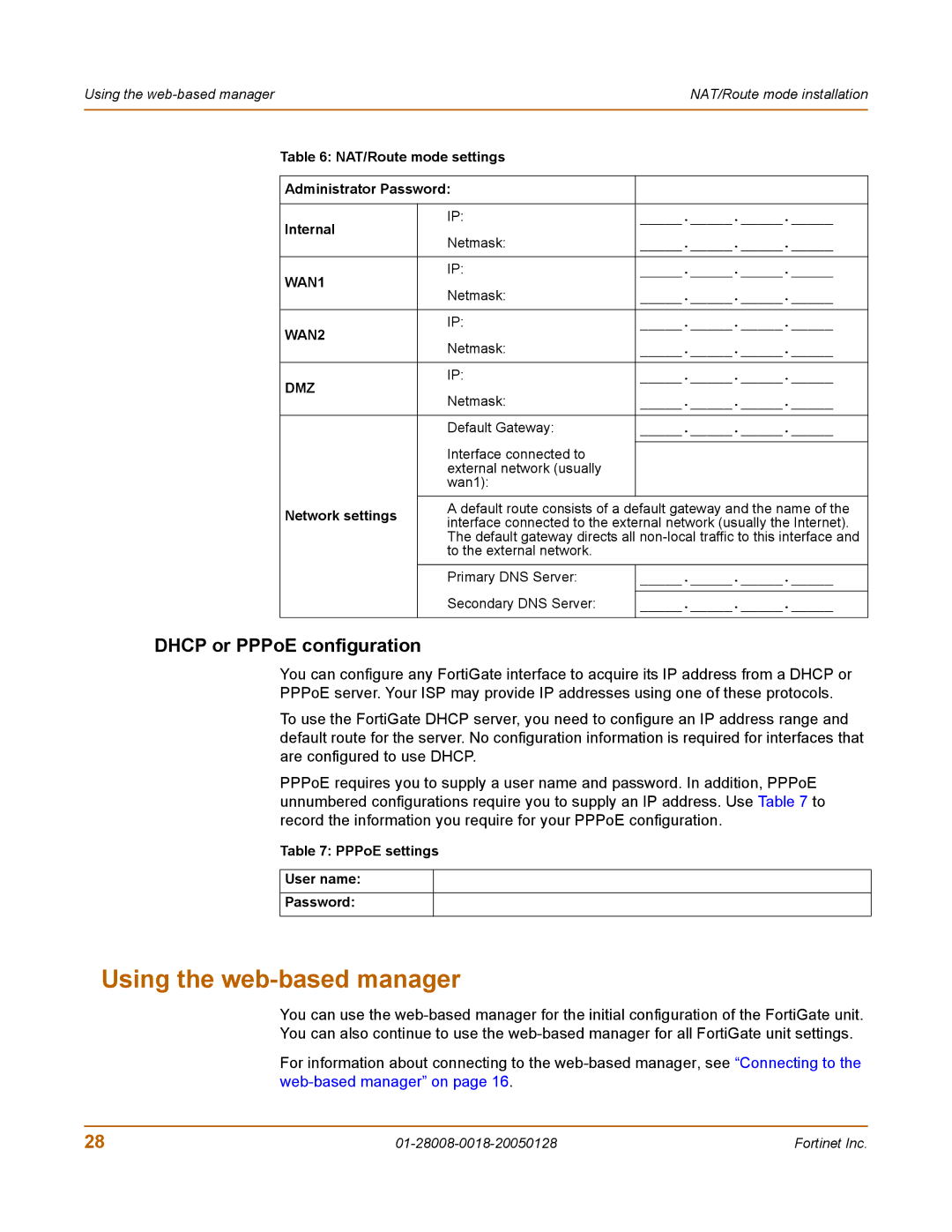
Using the |
| NAT/Route mode installation | |
|
|
|
|
| Table 6: NAT/Route mode settings |
| |
|
|
|
|
| Administrator Password: |
| |
|
|
|
|
| Internal | IP: | _____._____._____._____ |
| Netmask: | _____._____._____._____ | |
|
| ||
| WAN1 | IP: | _____._____._____._____ |
| Netmask: | _____._____._____._____ | |
|
| ||
| WAN2 | IP: | _____._____._____._____ |
| Netmask: | _____._____._____._____ | |
|
| ||
| DMZ | IP: | _____._____._____._____ |
| Netmask: | _____._____._____._____ | |
|
| ||
|
| Default Gateway: | _____._____._____._____ |
|
| Interface connected to |
|
|
| external network (usually |
|
|
| wan1): |
|
|
|
|
|
| Network settings | A default route consists of a default gateway and the name of the | |
| interface connected to the external network (usually the Internet). | ||
|
| ||
|
| The default gateway directs all | |
|
| to the external network. |
|
|
|
|
|
|
| Primary DNS Server: | _____._____._____._____ |
|
| Secondary DNS Server: | _____._____._____._____ |
DHCP or PPPoE configuration
You can configure any FortiGate interface to acquire its IP address from a DHCP or PPPoE server. Your ISP may provide IP addresses using one of these protocols.
To use the FortiGate DHCP server, you need to configure an IP address range and default route for the server. No configuration information is required for interfaces that are configured to use DHCP.
PPPoE requires you to supply a user name and password. In addition, PPPoE unnumbered configurations require you to supply an IP address. Use Table 7 to record the information you require for your PPPoE configuration.
Table 7: PPPoE settings
User name:
Password:
Using the web-based manager
You can use the
You can also continue to use the
For information about connecting to the
28 | Fortinet Inc. |
